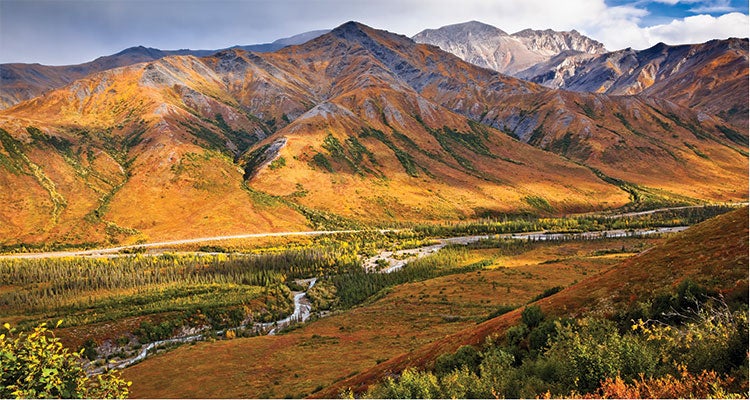Could an Alaskan Oil Pipeline Become America's Next Great Long Trail?

'The Dalton Highway, pictured here in the Brooks Range, generally runs parallel to the pipeline. Photo by Sunny Awazuhara-reed/firstlight.com'
Alaska has the most wilderness in the U.S. by far: 56 million acres, or more than half the area of America’s biggest state. One thing it doesn’t have: a marquee long trail.
That may change.
The path is already there, in the form of an 800-mile gravel service pad paralleling the Trans-Alaska Pipeline. But you can’t hike on it. Yet. Last March, Alaska State Rep. Jonathan Kreiss-Tomkins and a coalition of fellow Alaskans hatched an idea to let hikers sample the state’s famous wilderness, Arctic to Pacific, along the pipe’s route. Dubbed the Trans-Alaska Trail, it would give backpackers the opportunity to trek across sprawling tundra and cross three mountain ranges.
In a region with few established routes and swampy, trail-devouring conditions in summer, the raised gravel path’s existence is a bit of serendipity. The pipeline would often be in view, true. It could hardly diminish the caribou herds, or the broken peaks of the Brooks Range. Besides, what better way to commune with the hardy homesteaders who changed Alaska’s history than by shouldering a pack and striking out into the state’s rugged interior?
Transforming Alaska’s flagging petro-economy into a recreational opportunity seems like a no-brainer. Of course, big ideas often get mired in bureaucracy, and Kreiss-Tomkins acknowledges that getting stakeholders, including pipeline operator Alyeska, onboard is likely to be a multiyear process. Boosters just picked up an important ally: the National Park Service and its Director Jon Jarvis.
“They’ll lend technical expertise, and because the National Park Service is the management agency for the Appalachian Trail, we’re tapping into that brain trust,” Kreiss-Tomkins says. “That’s a major piece of progress.”